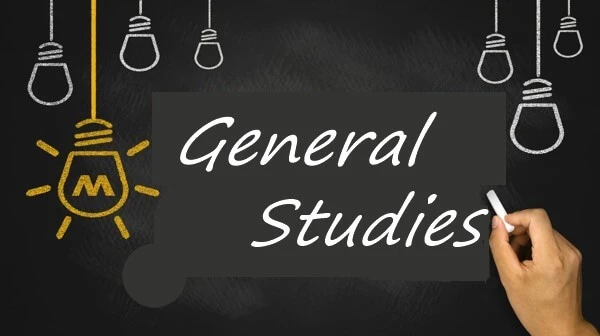Electrochemical Potentials Books
Author: Maliki
School: Edo University
Department: Science and Technology
Course Code: CHM111
Topics: atomic theory, atoms, Joseph John Thomson atomic model, cathode ray tube, Plum-pudding model, electromagnetic spectrum, subatomic particles, atomic number, mass number, relative atomic mass, mass spectrometer, mass spectra, isotopes, periodic law, transition element, Ionizations energy, electronegativity, atomic radius, ionic radius, electronic configuration, wave mechanical model, quantum numbers, electronic configuration of elements, Heisenberg uncertainty principle, Pauli's exclusion principle, Hund's rule, Aufbau‟s principle, atomic model hybridization, chemical symbols, chemical formula, molecular formula, structural formula, chemical equations, stoichiometry, mole concept, Avogadro's number, gram formula mass, gas laws, Boyle's law, Charles law, general gas equation, standard temperature and pressure, electrochemistry, cell notation, Standard Electrode Potentials, electrochemical, Daniel cell, cell potential electrolysis, reduction reaction, oxidation reaction, oxidation number, REDOX equation, chemical equilibrium, Lechatelier's Principle, solution chemistry, solubility, Raoult's law, nuclear reaction, radioactivity, Alpha rays, Beta rays, Gamma rays, natural radioactive decay series, thorium series, uranium series, actinium series, neptunium series
Basic Chemical Thermodynamics, 5th Edition
Author: Brian Smith
School: Lagos State University
Department: Science and Technology
Course Code: CHE256
Topics: Chemical Thermodynamics, mechanical systems equilibrium, perfect gas, energy, work, heat, temperature, temperature measurement, molecular motion, energy conservation, enthalpy, heat capacity, entropy, equilibrium, free energy, Gibbs free energy, phase equilibria, Clapeyron equation, Clausius-Clapeyron equation, chemical potential, Le Chatelier's principle, Hess's law, free-energy changes determination, Ellingham diagram, free-energy functions, ideal solution, ideal dilute solution, freezing-point depression, osmotic pressure, solid solubility, electrochemical cells, standard electrode potentials, irreversible expansion, Joule-Thomson experiment, imperfect gases, energy levels, Boltzmann factor, rotational partition function, vibrational partition function, chemical equilibrium
Author: CHE UI
School: University of Ibadan
Department: Science and Technology
Course Code: CHE156
Topics: Electrochemistry, electrode potential, electrochemical cell, potentiometer, standard electrode potential, standard hydrogen electrode, standard electrode reduction potentials, redox reactions feasibility, Gibbs's energy
Schaum's Outline of College Chemistry ,Ninth edition
Author: Jerome Rosenberg, Lawrence Epstein, Peter Krieger
School: Ahmadu Bello University, Zaria
Department: Science and Technology
Course Code: CHEM131
Topics: temperature, temperature units, atomic mass, molar mass, molecular mass, relative atomic mass, emperical formula, chemical formula, limiting reactant, chemical reactions, gas, gas volume, pressure, standard atmospheric pressure, pressure measurement, gas law, Boyle's law, Charles's law, Gay-lussac law, combined gas law, ideal gas, ideal gas law, kinetic theory, avogardo hypothesis, molar volume, gas volume, gas stoichiometry, thermochemistry, heat, heat capacity, calorimetry, energy, enthalphy, thermochemical reactions, atomic structure, particle, waves, Pauli principle, Periodic law, Aufbau principle, Electron configuration, Atomic radii, ionization energy, electron affinity, chemical bonding, molecular structure, ionic compounds, covalence, valence-bond representation, molecular-orbital representation, π BONDING, MULTICENTER π BONDS, coordination compounds, isomerism, solid, liquid, crystals, crystal forces, Ionic Radii, oxidation-reduction, oxidation number, oxidizing agents, reducing agents, ionic notation, balancing equations, concentration, concentration scales, concentration units, dilution, volumetric standard solutions, vapor pressure lowering, freezing-point lowering, boiling-point lowering, Boiling-point elevation, osmotic pressure, Law of distribution, isomerism, functional groups, organic chemistry, biochemistry, thermodynamics, chemical equilibrium, Equilibrium constant, Le Chatelier's principle, acid, base, hydrolysis, buffer solution, indicators, weak polyprotic acids, tittration, complex ions, coordination complexes, electrochemistry, solubility product, electrical units, electrolysis, voltaic cells, standard half-cell potentials, free energy, Nonstandard potentials, rate of reactions, rate constant, energy of activation, Nuclear process, Binding energy, nuclear equations, radiochemistry
Redox reactions and electrochemistry
Author: CHM FUNAAB
School: Federal University of Agriculture, Abeokuta
Department: Science and Technology
Course Code: CHM101
Topics: Redox reactions, voltaic cells, electrode potentials, Nernst equation, electrolytic cells, oxidation numbers, balancing redox equations, redox chemistry, Electrochemistry, voltaic cells, cell notation, electrolytic cells, standard electrode potentials, standard hydrogen electrode, standard redox table, standard cell voltage, redox reactions, standard cell potential, equilibrium constant, Nernst equation
Schaum’s outline of analytical chemistry
Author: Adon Gordus
School: Edo University
Department: Science and Technology
Course Code: CHM221
Topics: analytical chemistry, stoichiometry, statistics, probability, Gibbs free energy, strong acid, strong base, titration, weak acid, weak base titrations, pH color indicators, polyprotic weak acids, pH approximations, precipitates, complex ion equilibria, electrochemical cells, galvanic cells, cell thermodynamics, potentiometric titrations, phase separations, chromatography, fractional distillation, solvent extractions, chromatographic separations, spectral measurements, Beer's law, photometric titrations, radioactivity, decay rate equations, neutron activation, radioactivity statistics
Chemistry - Study and Revision Guide
Author: Christopher Talbot, Richard Harwood
School: Federal University of Agriculture, Abeokuta
Department: Science and Technology
Course Code: CHM101
Topics: stoichiometry, mole concept, gases, reacting mass, reacting volume, atomic structure, nuclear atom, electron configuration, periodicity, periodic table, periodic trends, chemical bonding, chemical structure, ionic bonding, ionic structure, covalent bonding, covalent structures, intermolecular forces, metallic bonding, thermochemistry, Hess's law, bond enthalpies, chemical kinetics, collision theory, rate of reaction, equilibrium, acid, base, pH scale, strong acid, strong base, acid deposition, redox process, oxidation, reduction redox processes.electrochemical cells, organic chemistry, functional group chemistry, periodic table, transition metals, chemical bonding, chemical structure, hybridization, energy cycles, entropy, spontaneity, reaction mechanis, .activation energy, Lewis acid, Lewis base, organic chemistry
Author: BL theraja, AK theraja
School: Federal University of Technology, Owerri
Department: Engineering
Course Code: ENG226, EEE301, PSE312
Topics: Electric current, Ohm's Law, Network theorems, work, power, energy, electrostatics, capacitance, magnetism, electromagnetism, electromagnetic induction, magnetic hysteresis, electrochemical power sources, electrical instruments and measurements, A.C fundamentals, Complex numbers, Series A.C circuits, parallel A.C circuits, A.C network analysis, A.C bridges, A.C filter networks, circle diagrams, polyphase circuits, harmonics, Fourier series, transients, symmetrical components
Engineering Chemistry ( Government of Tamilnadu )
Author: K.Mohan, K.SUBRAMANIAN, S.MAHALINGAM, K.HEMACHANDRAN, I.SYED AHAMED HUSSAIN
School: Federal University of Technology, Owerri
Department: Science and Technology
Course Code: CHM101
Topics: ATOMIC STRUCTURES, MOLECULAR MASS, ACIDS, BASES, SOLUTIONS, COLLOIDS, NANO PARTICLES, TECHNOLOGY OF WATER, CATALYSIS, GLASS, ELECTROCHEMISTRY, ELECTROCHEMICAL CELL, ENERGY RESOURCES, corrosion, coating, ENVIRONMENTAL CHEMISTRY, FUELS, COMBUSTION, REFRACTORIES, EXTRACTION OF METALS, POWDER, METALLURGY ALLOYS, ABRASIVES, CEMENT, CERAMICS, LUBRICANTS, ADHESIVES, POLYMERS
Concise Chemical Thermodynamics, 2nd edition
Author: JRW Warn, APH Peters
School: Lagos State University
Department: Science and Technology
Course Code: CHE256
Topics: Chemical Thermodynamics, Energy, Thermochemistry, Spontaneous changes, Entropy, Equilibrium experiments, Electrochemical cells, Free energy, industrial processes, Computational thermochemistry
Departments

Administration, Social and Management science

Agriculture and Veterinary Medicine

Arts and Humanities

Education

Engineering

General studies

Law

Medical, Pharmaceutical and Health science

Science and Technology